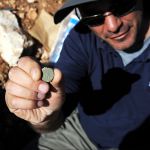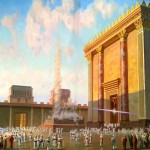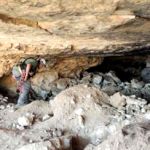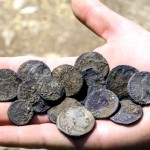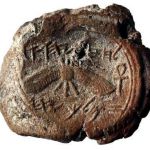“Place me like a seal over your heart, like a seal on your arm …” (Song of Songs 8:6)
A 10-year-old boy, Matvei Tcepliaev, who is visiting Israel from Russia, volunteered to sift through discarded soil from the Temple Mount and found a rare 3,000-year-old seal from the time of King David. It is the first of its kind to be discovered in Jerusalem.
The Temple Mount Sifting Project invites volunteers of all ages who are at least three feet tall to the Tzurim Valley National Park on the western slope of Mount Scopus where around 10,000 tons, 400 truckloads, of excavated soil from construction projects on the Temple Mount were discarded.
Much of this soil was taken from the entrance to King Herod’s construction known today as Solomon’s Stables, which lies 12.5 meters under the southeast Temple Mount courtyard.
After the unauthorized excavations from 1996–1999, the stables were officially converted to the El-Marwani Mosque, a 500 square-meter underground Muslim prayer hall that can hold 10,000+ worshipers.
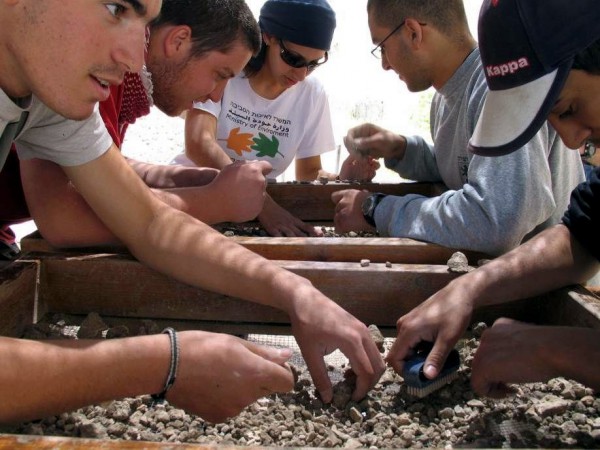
Volunteers sift through debris irresponsibly excavated from the Temple Mount. (Photo by Zachi Dvira)
From its inception, the Temple Mount Sifting Project has operated under Bar Ilan University, initiated and co-founded by former student Zachi (Zweig) Dvira, with the help of the City of David Foundation.
Since the educational tourism site began in 2004, over 150,000 volunteers have taken part in the project’s wet-sifting phase—spreading mud from the Mount over a screen and hosing it away to extract interned objects.
Finds from the sifting project take time to be deciphered and dated, so usually international volunteers are not present to learn the significance of their finds.
Tcepliaev’s cone-shaped seal, archaeologists have revealed, dates to the 10th century BC during the reigns of Kings David and Solomon. It “testifies to the administrative activity which took place upon the Temple Mount during those times.”
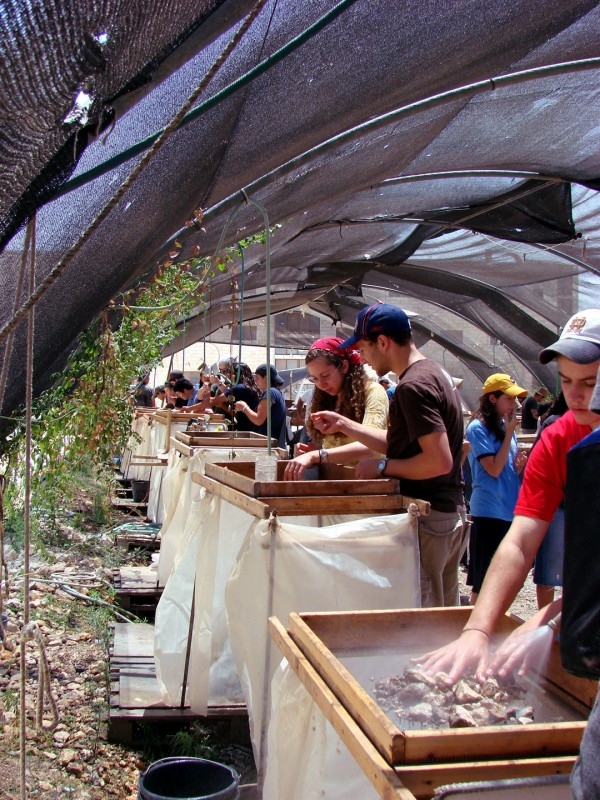
Volunteers for the Temple Mount Sifting project search for coins, pottery, and other finds as they clean debris excavated from the Mount during the building of the El Marwani Mosque in Solomon’s Stables.
“What makes this discovery particularly significant is that it originated from upon the Temple Mount itself,” Dr. Gabriel Barkay, the cofounder and a director of the Temple Mount Sifting Project, stated in a press release.
“The dating of the seal corresponds to the historical period of the Jebusites and the conquest of Jerusalem by King David, as well as the construction of the Temple and the royal official compound by his son, King Solomon,” Barkay elaborated. “All the parallel seals with similar stylistic designs have been found at sites in Israel, among them Tel Beit Shemesh, Tel Gezer and Tel Rehov, and were dated to the 11th–10th centuries BCE.”
Barkay described the seal as pierced through so that it could be hung from a string or chain, and said, “upon the base of the seal appear the images of two animals, one on top of the other, perhaps representing a predator and its prey.”
As expected, recovering history through tons of displaced soil has proven challenging. Without archaeological supervision, the Waqf likely damaged or discarded significant evidence of Israel’s rich Temple history; for certain, the haphazard removal especially from 1996–1999 broke up the holy site’s earth strata, which are used for period dating.
“In recent years, using newly developed statistical methodologies and technologies we have managed to overcome the challenge of having finds with no exact context since they were not recovered in a proper archaeological excavation,” said Dvira.
Project leaders of the sifting project call volunteers to look for pottery, glass shards, metals, bones, mosaic stones and worked stones, as well as rarer coins, seals or jewelry, which are then registered by staff members.
“The Temple Mount Sifting Project has focused its efforts on the enormous tasks of processing and studying the finds and preparing them for scientific publication. Presently, more than half a million finds are still waiting to be processed and analyzed in our laboratory,” Dvira said. “Since the Temple Mount has never been excavated, the ancient artifacts retrieved in the Sifting Project provide valuable and previously inaccessible information. The many categories of finds are among the largest and most varied ever found in Jerusalem.”
Ruth, a January 2010 volunteer with the sifting project shared the emotion of the experience.
“When the guide handed me my certificate, I read the words, ‘Thou wilt arise, and have compassion upon Zion; for it is time to be gracious unto her, for the appointed time is come: For Thy servants take pleasure in her stones, and love her dust (Psalms 102:14–15)‘ and saw that the dust was still on my fingers. I just cried!” Ruth writes in her experience review.
Another 2010 volunteer, Lindsay Ingalls, stated she found pottery, mosaics, Roman glass, a coin, an ancient nail and bones from the Temple sacrifices.
“The soil was gray—filled with ashes from the sacrifices,” Ingalls writes. (TMSP)




